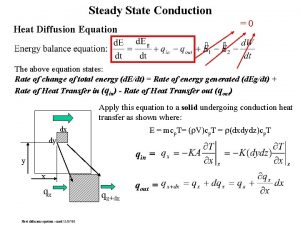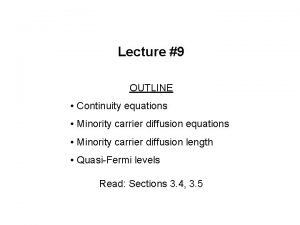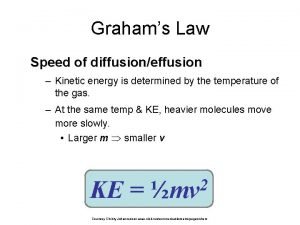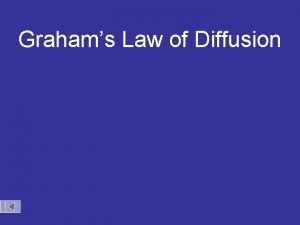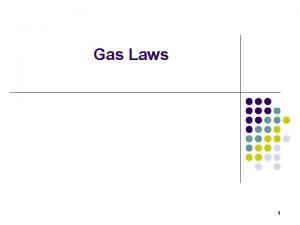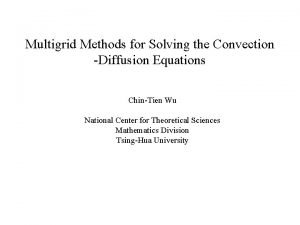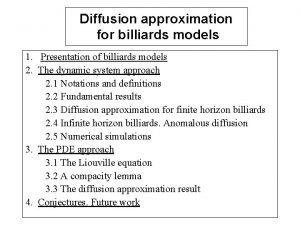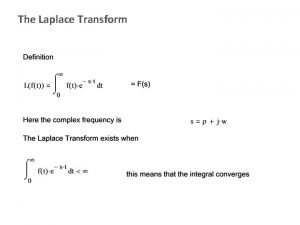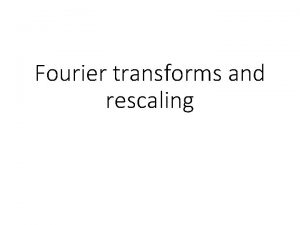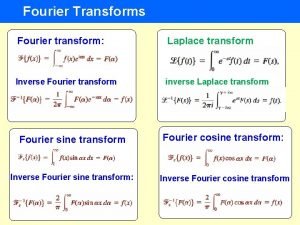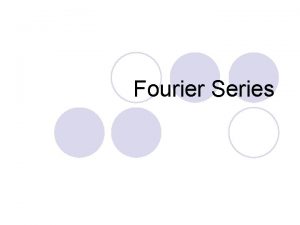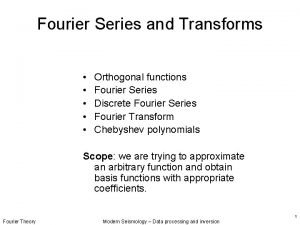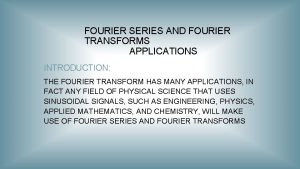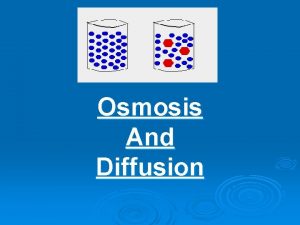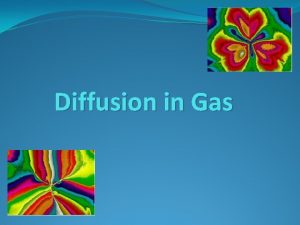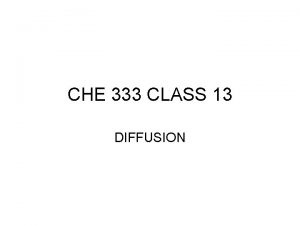Fourier Transforms Solving the Diffusion Equation Joseph Fourier




















- Slides: 20

Fourier Transforms Solving the Diffusion Equation

Joseph Fourier

The Heat Equation �Fourier, Joseph (1822). Théorie analytique de la chaleur �The heat equation is for temperature what the diffusion equation is for solutes �Fourier developed the Fourier transform and Fourier series as tools to solve this equation

The Fourier Transform �Take a function f(x), where x is space and we want to transform it to wave space k �where

The Inverse Fourier Transform �To invert from Fourier space to real space �Where the inverse transform is given by

Aside �Note that there are several alternative definitions of the Fourier transform (see for example Wikipedia page). They are all equivalent, but once you choose one convention you must stay with that convention. In this class we will take the definition as given on previous page (which is typical in Physics) Just be careful if looking up references to make sure that you are being consistent.

So who cares and why on earth would you ever do this? �The Fourier transform decomposes a function/ signal into the various waves (of wavelength k) that make it up (useful for example in noise signal processing) �Many times it is easier to solve an equation in Fourier space than in real space (what we will do here).

Properties of Fourier Transform �Linearity �Translation �Modulation

Properties of Fourier Transform �Scaling �Convolution where

Properties of Fourier Transform �Derivatives For more details and properties please see http: //en. wikipedia. org/wiki/Fourier_transform (again, be careful that you are using the correct form of FT)

Some useful Fourier Transforms (of many – again see Wikipedia for more)

Again, who cares? �Take the Diffusion Equation (1 d) �Fourier Transform this equation �We have reduced a PDE in t and x to an ODE in t

Solution �Solve the ODE �And now in real space And we have our solution (as ugly as it may be – it is a correct solution)

Consider the following simple example A delta pulse initial condition (i. e. a small localized spill of mass 1) Then Any ideas what to do? Hint: Let

What is the integral? Hint: Let

And rearrange Recall What is this?

�Any of you who have taken a basic intro to contaminant transport should recognize this as the fundamental solution to the diffusion equation �What if? �Well then

What does this solution look like? Pay attention to two things: Peak concentration Width of distribution

�What about more complex initial condition Not always so easy to invert But we can use Greens functions (next chapter)

Take Away Message �The Fourier transform allows us to convert a PDE in space and time into an ODE in wavenumber and time, which is in general much easier to solve. �Once we have the solution in wave space we have to be able to invert. �Aside – sometimes the solution in Fourier space, even is we cannot invert provides a lot of useful information (we will see this later on in particular).
 Simple diffusion
Simple diffusion What is expansion diffusion
What is expansion diffusion Joseph fourier quotes
Joseph fourier quotes Diffusion eq
Diffusion eq Continuity equation semiconductor
Continuity equation semiconductor Kinetic gas equation
Kinetic gas equation Nisd.net
Nisd.net Graham's law of effusion answer key
Graham's law of effusion answer key Diffusion equation
Diffusion equation Rates of diffusion of gases
Rates of diffusion of gases How does eurylochus justify killing the cattle
How does eurylochus justify killing the cattle Laplace transfrom table
Laplace transfrom table The unit that transform data into information
The unit that transform data into information Transforms of discontinuous functions
Transforms of discontinuous functions This transforms a bare stage into the world of the play
This transforms a bare stage into the world of the play A play that ends unhappily
A play that ends unhappily Inverse z-transform table
Inverse z-transform table Transforms eroded parts of earth's surface into lakes
Transforms eroded parts of earth's surface into lakes 2d orthogonal and unitary transforms
2d orthogonal and unitary transforms Energy transformation and conservation
Energy transformation and conservation Which phase transforms srs document
Which phase transforms srs document



